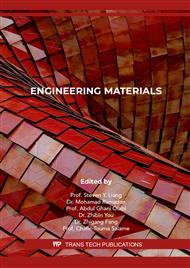p.87
p.95
p.109
p.117
p.123
p.129
p.139
p.147
p.153
Numerical Simulation of Forging Process of Ultra-High Strength Stainless Steel
Abstract:
In this work, the forging process of ultra-high strength stainless steel has been simulated based on Simufact Forming. The simulation results show the temperature drop at the ends of the workpiece is obvious, and the strain is difficult to penetrate. Affected by the shape of the workpiece, the strain is mainly located on the surface during the first and second passes of stretching and chamfering, while the strain penetrates toward the center in the middle passes of stretching. It is noted that the degree of dynamic recrystallization (DRX) of center microstructure is insufficient due to the strain is slightly larger than the critical strain of DRX. Affected by temperature field and strain field, dynamic recovery is the main softening mechanism during radial forging.
Info:
Periodical:
Pages:
123-128
Citation:
Online since:
June 2022
Authors:
Keywords:
Price:
Сopyright:
© 2022 Trans Tech Publications Ltd. All Rights Reserved
Share:
Citation:


